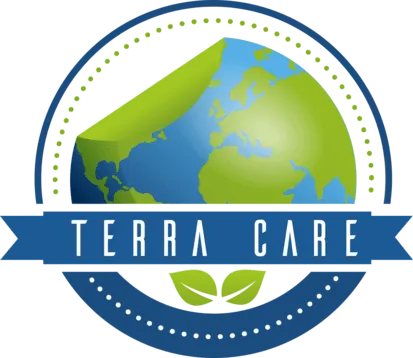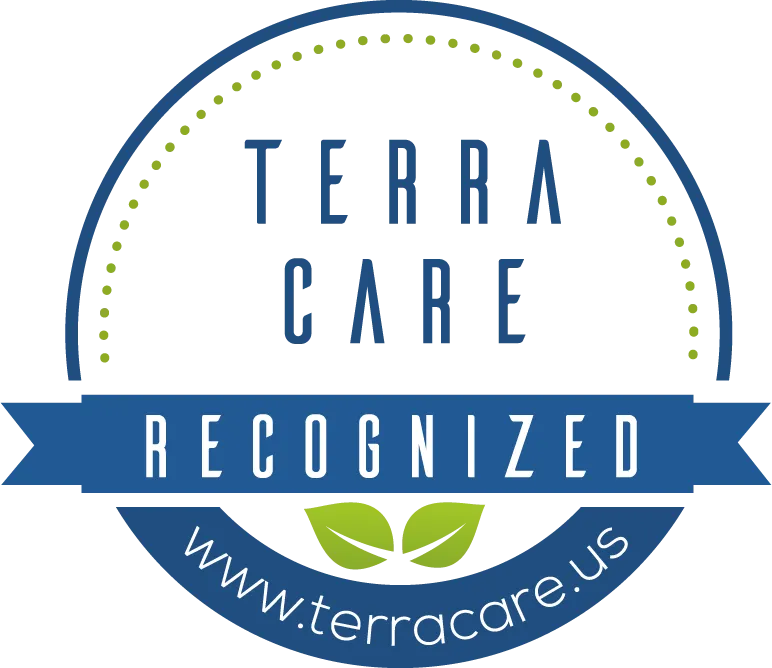
Safer for You & Safer
for the Environment
The Hazardous Materials Identification System, or HMIS®, was developed by the National Paint & Coatings Association (NPCA) to help employers comply with OSHA’s Hazard Communication (HCS), 29 CFR 1910.1200. The system utilizes colored bars, numbers and symbols to convey at-a-glance the hazards of chemicals used in the workplace. Products must have only zeros or ones on HMIS® III numbers
Specific sections of an HMIS® III label include the following:
Health
The Health section conveys the health hazards of the material. If present, the * asterisk signifies a chronic health hazard. The number indicates the acute (short-term) exposures.
Flammability
The Flammability criteria are defined according to OSHA standards and are used to describe how prone the materials is to catching fire.
Physical Hazard
Hazards are assessed using the OSHA criterion of physical hazard. This replaces the now-obsolete section titled Reactivity. In all criteria sets, the level of hazard is indicated using numeric values (0 = low hazard to 4 = high hazard).

Must Contain...
NO VOLATILE ORGANIC COMPOUNDS (VOCS)
When released into the environment, Volatile Organic Compounds (VOCs) can damage soil and groundwater. Vapors of VOCs escaping into the air contribute to air pollution. Some specific VOCs are greenhouse gasses which contribute to enhanced global warming.
Some VOCs also react with nitrogen oxides in the air in the presence of sunlight to form ozone. Although ozone is beneficial in the upper atmosphere because it absorbs UV thus protecting humans, plants, and animals from exposure to dangerous solar radiation, it poses a health threat in the lower atmosphere by causing respiratory problems. In addition high concentrations of low level ozone can damage rops and buildings.
NO HAZARDOUS COMPONENTS
In many cases, materials in accordance with Federal Regulation 29 CFR 1910.1200 are considered non-hazardous and therefore need not appear on a material safety data sheet. These materials are accepted as not to be hazardous to health or environment.
NO NONYLPHENOL ETHOXYLATES (NPE)
Nonylphenol Ethoxylates (NPEs) have many uses, but they are primarily used as surfactants in cleaning chemical formulations, as wetting agents and as dispersants or emulsifiers in some pesticide formulations. They are part of a group of chemicals called Endocrine Disrupting Chemicals.Exposure to endocrine disrupting chemicals can cause irreversible damage to humans and animals. Potential effects of NPE on humans include reproductive disorders, endocrine disruption, decreased sperm count in men, learning disabilities, birth defects and cancer (suspected).
NO OZONE DEPLETING SUBSTANCES (ODS)
Chlorofluorocarbons (CFCs) and other contributory substances are commonly referred to as ozone-depleting substances (ODS). After being emitted at the Earth’s surface, they are transported into the stratosphere where they attack the protective ozone layer.
Since the ozone layer prevents most harmful UVB wavelengths of ultraviolet light from passing through the Earth’s atmosphere, observed and projected decreases in ozone have generated worldwide concern leading to adoption of the Montreal Protocol banning the production of CFCs and halons as well as related ozone depleting chemicals such as carbon tetrachloride and trichloroethane.
It is suspected that a variety of biological consequences such as increases in skin cancer, damage to plants, and reduction of plankton populations in the ocean may result from the increased UV exposure due to ozone depletion.
NO SARA SECTION 313 REPORTABLE INGREDIENTS
Primarily due to the deadly release of methyl isocyanate (MIC) in Bhopal, India in the early 1980s and several other releases of toxic chemicals in the United States, Congress passed legislation called Title III of the Superfund Amendments and Reauthorization Act of 1988 (SARA). This requires states, communities and industry to plan for and respond to chemical accidents, develop inventories of hazardous substances, track toxic chemical releases, and provide public access to information on hazardous substances.
This law, often referred to as SARA Title III or EPCRA (Emergency Planning and Community Right-to-Know Act), establishes several different reporting and planning requirements for businesses that handle, store or manufacture over 600 listed hazardous materials above specified thresholds. Specifically, SARA section 313 requires reporting ongoing releases of “toxic chemicals.”
The SARA Section 313 Toxics Release Inventory (TRI) report must be submitted annually every July 1 for those chemicals on a special list used above the reporting threshold during the previous year. The specific list of chemicals encompasses more than 600 chemicals and chemical categories.
NO PHOSPHATES
Phosphates are often used in fabric, dishwasher and other detergents.When excess phosphates enter waterways they increase the amount of nutrients available for plant growth, a process known as Eutrophication. This causes excessive growth of plants such as algae, causing what is known as algal bloom and appearing to turn the lake green.Algal blooms on the surface of the lake shade the plants growing underneath. These plants then die and are decomposed. This decomposition is carried out by microorganisms which require oxygen in order to live. In decomposing the plants in the lake the microorganisms require more oxygen (biochemical oxygen demand or BOD) than is naturally available and the oxygen levels in the lake will be used up. This results in a very unhealthy lake incapable of supporting plant nd animal life and the lake may actually “die.”
NO HEAVY METALS
Chlorine is an element used in industry and found in some household and institutional cleaning products. In fact, it is one of the most commonly manufactured chemicals in the United States.When liquid chlorine is released, it quickly turns into a gas that stays close to the ground and spreads rapidly. Because of its poisonous nature, chlorine was used as a chemical weapon during World War I as a choking (pulmonary) agent. Common household chlorine bleach can release chlorine gas if it is mixed with other cleaning agents.When chlorine gas comes into contact with moist tissues such as the eyes, throat, and lungs, an acid is produced that can damage these tissues. In extreme situations, it can cause death. Many researchers believe chlorine mimics hormones, resulting in low sperm counts and testicular cancer in men and breast cancer.The problem of chlorine in the environment is more complex. Some chlorine and chlorine compounds are persistent—they do not biodegrade very easily. Some of these compounds bioaccumulate in the tissues of animals, including people. Additionally, in the environment they biomagnify, meaning animals higher up on the food chain have higher concentrations of chlorine in their tissues because they feed on animals with chlorine in their tissues.
NO CHLORINE
Chlorine is an element used in industry and found in some household and institutional cleaning products. In fact, it is one of the most commonly manufactured chemicals in the United States.When liquid chlorine is released, it quickly turns into a gas that stays close to the ground and spreads rapidly. Because of its poisonous nature, chlorine was used as a chemical weapon during World War I as a choking (pulmonary) agent. Common household chlorine bleach can release chlorine gas if it is mixed with other cleaning agents.When chlorine gas comes into contact with moist tissues such as the eyes, throat, and lungs, an acid is produced that can damage these tissues. In extreme situations, it can cause death. Many researchers believe chlorine mimics hormones, resulting in low sperm counts and testicular cancer in men and breast cancer.The problem of chlorine in the environment is more complex. Some chlorine and chlorine compounds are persistent—they do not biodegrade very easily. Some of these compounds bioaccumulate in the tissues of animals, including people. Additionally, in the environment they biomagnify, meaning animals higher up on the food chain have higher concentrations of chlorine in their tissues because they feed on animals with chlorine in their tissues.
NO PHTHALATES (PVC)
Phthalates are a class of chemicals commonly used in consumer products, most often used as plasticizers, or softening agents, in vinyl products such as polyvinyl chloride (PVC). Humans are widely exposed to phthalates because vinyl is used to make anything from home furnishings, medical devices, children’s items to packaging (product bottles).
Beyond vinyl, humans are further exposed to phthalates in personal scented products such as perfumes, soaps, lotions, shampoos. Phthalates are also used in industrial products as fragrances and deodorizers and are added to insecticides, adhesives, sealants and car-care products.
A study released by the Centers for Disease Control (CDC) in 2001 confirmed that humans have certain phthalates in our bodies. Eating, breathing and skin contact are all ways that phthalates make their way into our bodies.
Phthalates cause a wide range of adverse health problems including liver, kidney and lung damage as well as reproductive system and sexual developmental abnormalities. Phthalates are classified as “probable human carcinogens” by the EPA. The Department of Health and Human Services has also classified DEHP (a phthalate) as a potential carcinogen.

For a product to be Terra Care Certified it must meet at least 10 of our 12 core standards
Must Be Packaged In
Environmentally Responsible
Packaging
While there are varying opinions on what defines environmentally responsible packaging, our position is to use recycled (post consumer) materials whenever possible and recyclable materials always.


Must Be Certified As “Green” By a Recognized Third-Party Agency According to the Standards of That Agency
There are several third-party agencies that certify the “greenness” of products. Many purchasers of products actually prefer these of third-party certifications over self certifications. The two most widely accepted certifications are the US Environmental Protection Agency’s Designed for the Environment (DfE) and Green Seal.

For a product to be Terra Care Recognized it must meet at least 8 of the 10 following standards:
Has an HMIS rating of 2 out of 3 zeros
No Sara 313 reportable ingredients
No NPEs
Must be low-VOC <1%
Contains no ODS
Contains no Chlorine
Packaged in environmentally friendly packaging
Safer alternative formula to traditional remedies
Water Based formula
Not DOT Regulated
Terra Care Standard Seal developed by Xion Group LLC